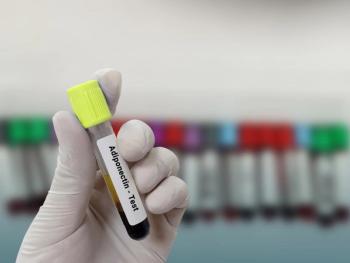
Wide Gaps in DMARD Adherence Reporting Complicate Rheumatoid Arthritis Care
Key Takeaways
- Nonadherence to DMARDs in RA varies widely, with rates from 1.5% to 100% across different studies and DMARD classes.
- The review identified 31 unique nonadherence measures, with indirect methods like questionnaires and pharmacy records being most prevalent.
DMARD nonadherence rates in patients with RA range from 0% to 100%, with inconsistent measurement tools and few validated interventions.
There is considerable variability in how disease-modifying antirheumatic drug (DMARD) nonadherence is measured, reported, and understood in
“The true prevalence of nonadherence to DMARDs in RA is unknown, and the factors that are associated with nonadherence have not been clearly defined,” the authors note. “This is further complicated by the lack of a gold-standard measure of nonadherence and the wide variety of nonadherence measures that have been used.”
RA remains the most prevalent autoimmune chronic inflammatory joint disease, with DMARD adherence profoundly influencing long-term outcomes, including disease activity, functional status, and risk of permanent disability from joint damage. Nonadherence can impair therapeutic response and lead to unnecessary treatment escalation or persistent disease activity.2
The review analyzed 172 manuscripts covering 154 unique studies with nearly 400,000 participants across 58 countries.1 The reported prevalence of nonadherence varied dramatically, ranging from as low as 1.5% to as high as 100% for nonadherence to any DMARD class. Conventional synthetic DMARD-specific rates spanned 0% to 95%, while biologic DMARD rates ranged from 3% to 95%. Methotrexate, the most frequently studied agent, demonstrated nonadherence rates ranging from 0% to 69% depending on the study design and measurement method.
The review identified 31 unique measures to assess nonadherence, classified into indirect, direct, and subjective approaches. Most studies relied on indirect tools to measure nonadherence, making up nearly 90% of assessments. These ranged from patient questionnaires (52%) and pharmacy refill records (30%) to electronic monitors (12%) and pill counts (2%). Fewer studies used subjective reports from patients or physicians (about 10%), and only 1.3% relied on direct drug level testing. However, the authors noted, “Much variability was seen when comparing different nonadherence tools within the same population.” In some cases, tablet counts and questionnaires yielded nearly identical estimates of nonadherence, with 27.1% vs 28.8%, respectively. In others, use of the medication possession ratio vs the proportion of days covered ratio within the same cohort generated widely divergent rates, with 62.3% vs 30.1%, respectively.
Patient-related factors were by far the most frequently investigated across the studies (368 reports), with younger age being linked to higher nonadherence in approximately one-third of reports, despite traditional expectations of greater adherence challenges in older adults due to polypharmacy and comorbid illness. Condition-related factors, such as longer disease duration, higher disease activity, presence of comorbidities, and functional status, generally showed no or inconsistent association with medication nonadherence. Socioeconomic analysis found the impact of comorbidities, income, and education was similarly mixed, with the majority of studies reporting no significant relationship. Non-Caucasian patients were more often reported as nonadherent in about half of the studies, while stronger beliefs in medication necessity were associated with better adherence.
Therapy-related factors, such as polypharmacy and monotherapy vs combination DMARDs, also showed conflicting or weak associations, challenging simple predictions about which patients are most at risk. Poor patient-provider relationships and suboptimal counseling were repeatedly linked to increased nonadherence, indicating that modifiable team and health system factors remain opportunities for future interventions.
The authors emphasized the clinical consequences of unrecognized nonadherence, which may lead to unnecessary treatment changes, persistent uncontrolled disease, and higher healthcare costs. While the lack of consistency across studies makes it challenging to compare and synthesize results across studies, the authors suggest developing reporting standards and determining the most valid methods for assessing nonadherence, adding that “Improvements in medication adherence interventions may have a far greater impact on patients' health than any advancement in specific medical treatment.”
References
1. Fraser L, Ailabouni N, Ellett LK, et al. A scoping review of disease-modifying antirheumatic drug nonadherence in rheumatoid arthritis: Measurement, prevalence and implications for clinical practice. Br J Clin Pharmacol. Published online September 21, 2025. doi:10.1002/bcp.70280
2. Li L, Cui Y, Yin R, et al. Medication adherence has an impact on disease activity in rheumatoid arthritis: a systematic review and meta-analysis. Patient Prefer Adherence. 2017;11:1343-1356. doi:10.2147/PPA.S140457
Newsletter
Stay ahead of policy, cost, and value—subscribe to AJMC for expert insights at the intersection of clinical care and health economics.









































